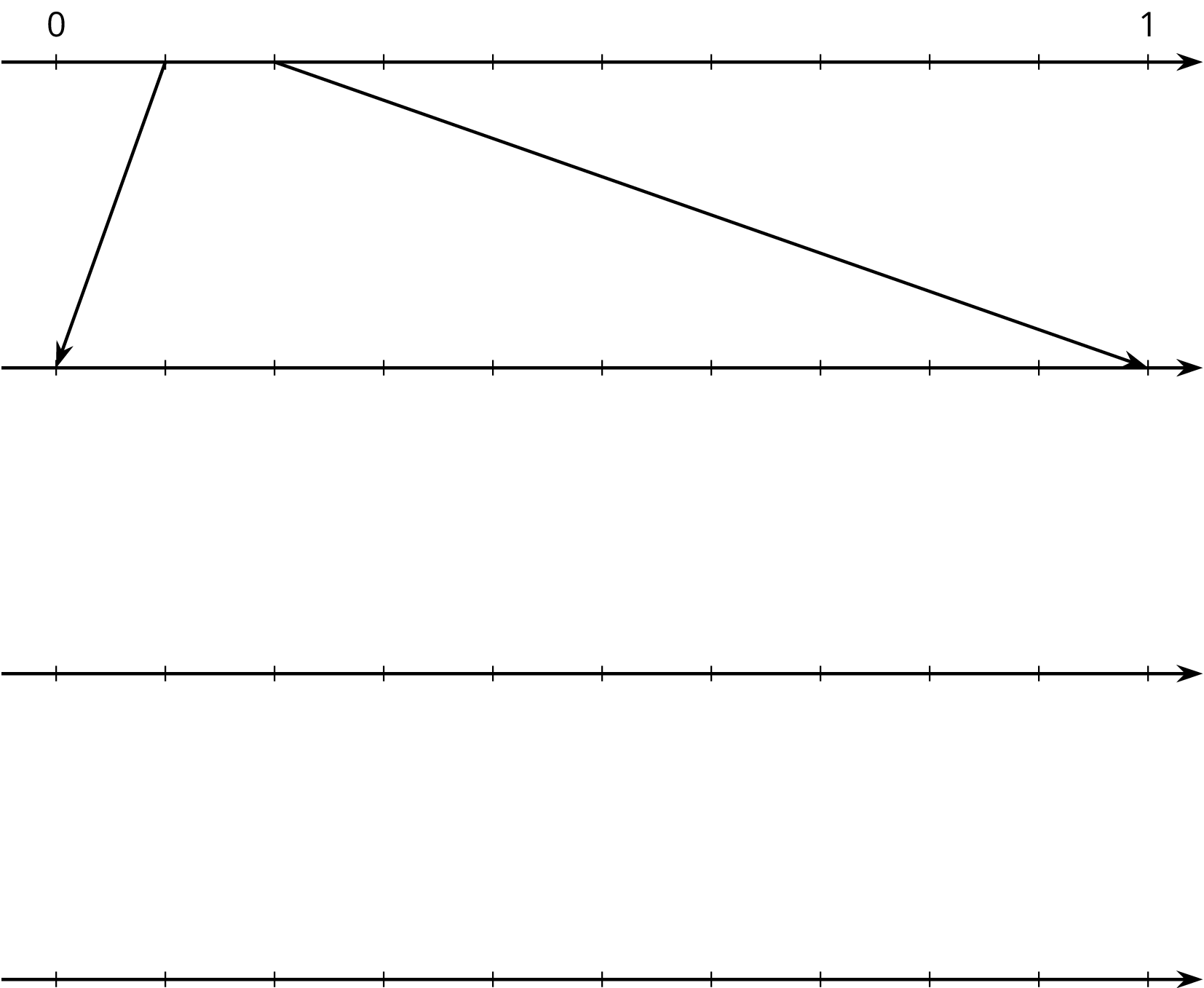14.1: Notice and Wonder: Shaded Bars
What do you notice? What do you wonder?

Let’s learn more about how rational numbers can be represented.
What do you notice? What do you wonder?

Here is a number line from 0 to 1.

Rational numbers are fractions and their opposites. All of these numbers are rational numbers. Show that they are rational by writing them in the form $\frac{a}{b}$ or $\text -\frac{a}{b}$.
All rational numbers have decimal representations, too. Find the decimal representation of each of these rational numbers.

On the topmost number line, label the tick marks. Next, find the first decimal place of $\frac{2}{11}$ using long division and estimate where $\frac{2}{11}$ should be placed on the top number line.
Label the tick marks of the second number line. Find the next decimal place of $\frac{2}{11}$ by continuing the long division and estimate where $\frac{2}{11}$ should be placed on the second number line. Add arrows from the second to the third number line to zoom in on the location of $\frac{2}{11}$.
Repeat the earlier step for the remaining number lines.
Let $x=\frac{25}{11}=2.272727. . . $ and $y=\frac{58}{33}=1.75757575. . .$
For each of the following questions, first decide whether the fraction or decimal representations of the numbers are more helpful to answer the question, and then find the answer.
We learned earlier that rational numbers are a fraction or the opposite of a fraction. For example, $\frac34$ and $\text-\frac52$ are both rational numbers. A complicated-looking numerical expression can also be a rational number as long as the value of the expression is a positive or negative fraction. For example, $\sqrt{64}$ and $\text-\sqrt[3]{\frac18}$ are rational numbers because $\sqrt{64} = 8$ and $\text-\sqrt[3]{\frac18} = \text-\frac12$.
Rational numbers can also be written using decimal notation. Some have finite decimal expansions, like 0.75, -2.5, or -0.5. Other rational numbers have infinite decimal expansions, like 0.7434343 . . . where the 43s repeat forever. To avoid writing the repeating part over and over, we use the notation $0.7\overline{43}$ for this number. The bar over part of the expansion tells us the part which is to repeat forever.
A decimal expansion of a number helps us plot it accurately on a number line divided into tenths. For example, $0.7\overline{43}$ should be between 0.7 and 0.8. Each further decimal digit increases the accuracy of our plotting. For example, the number $0.7\overline{43}$ is between 0.743 and 0.744.